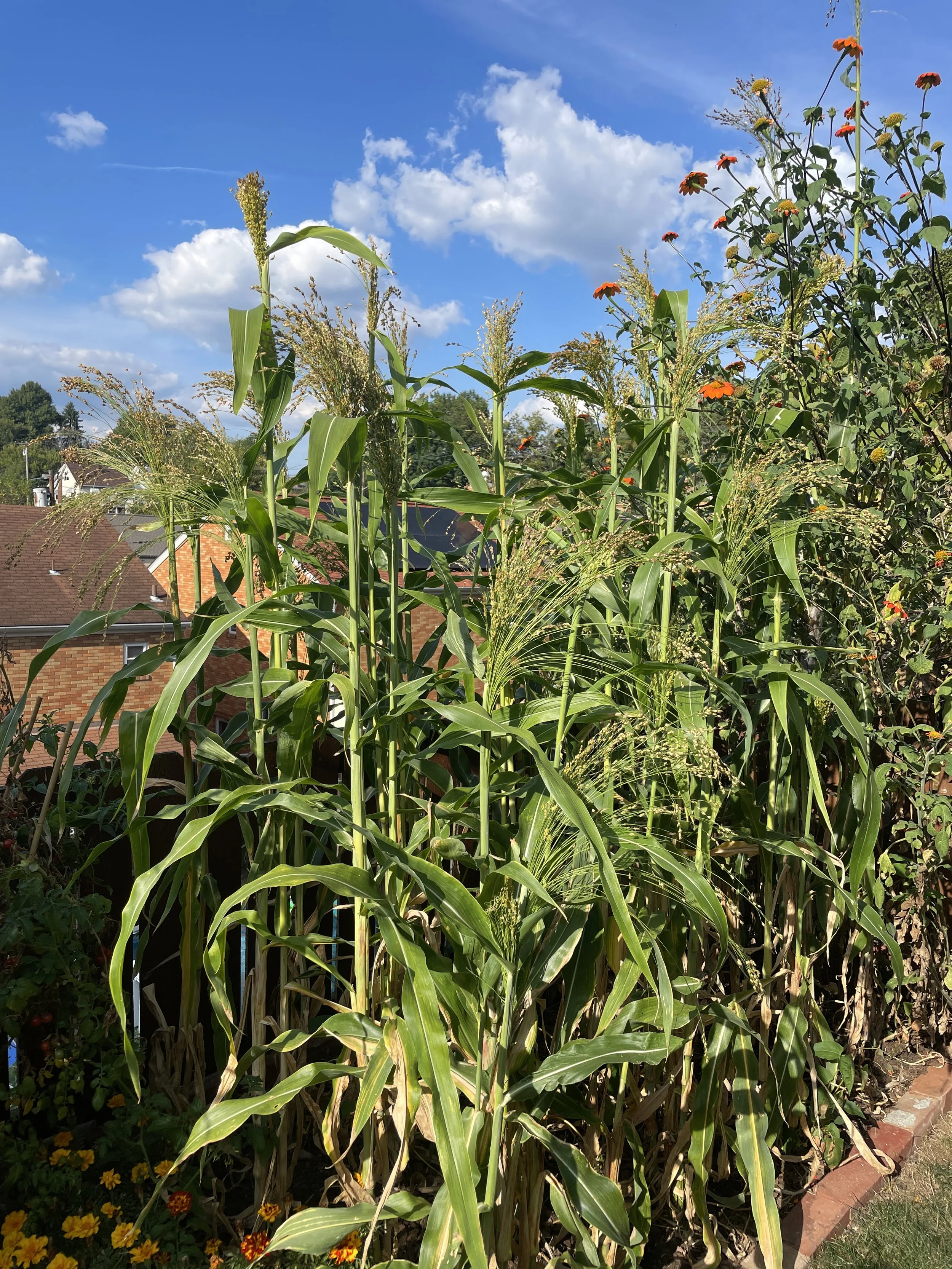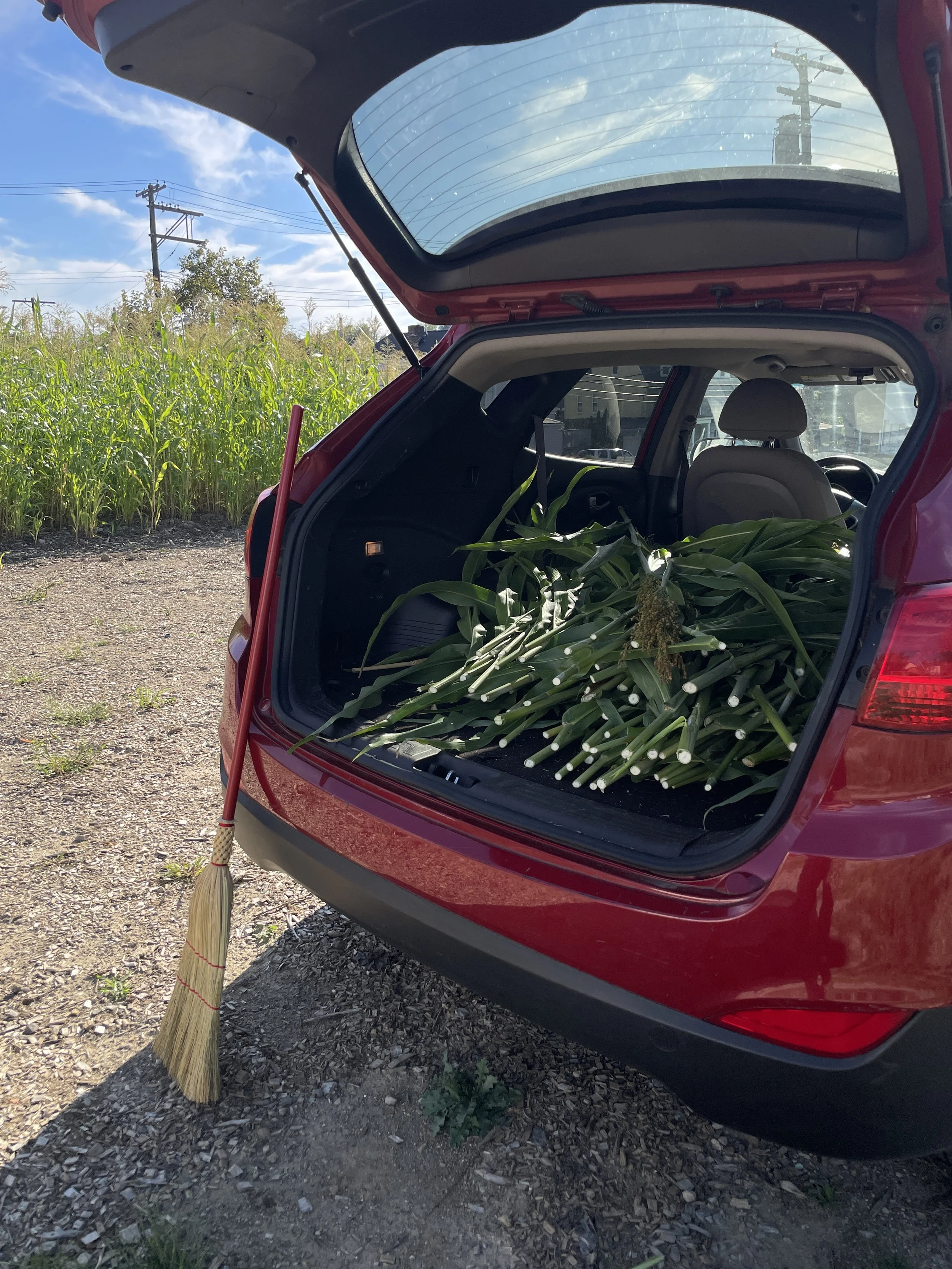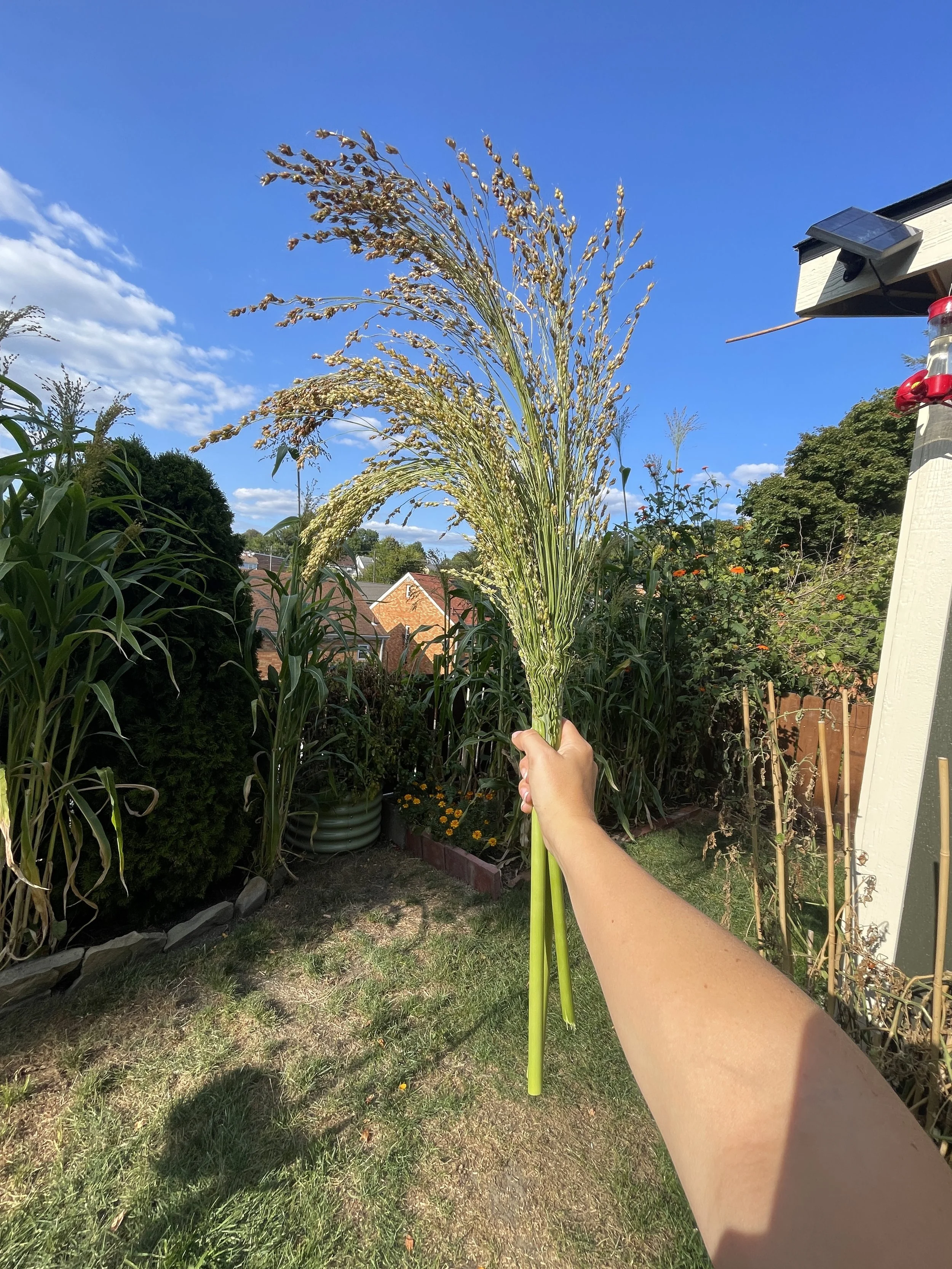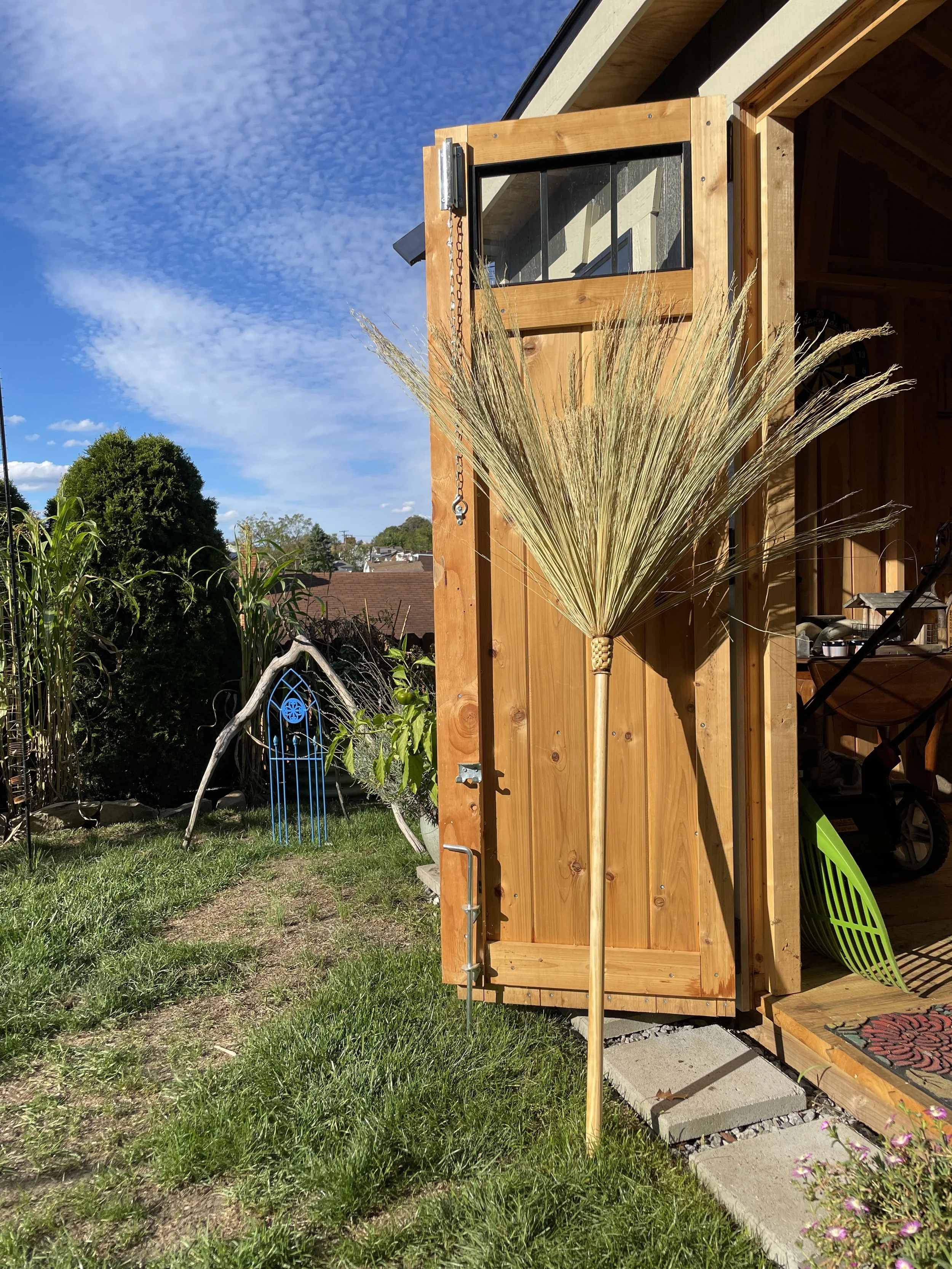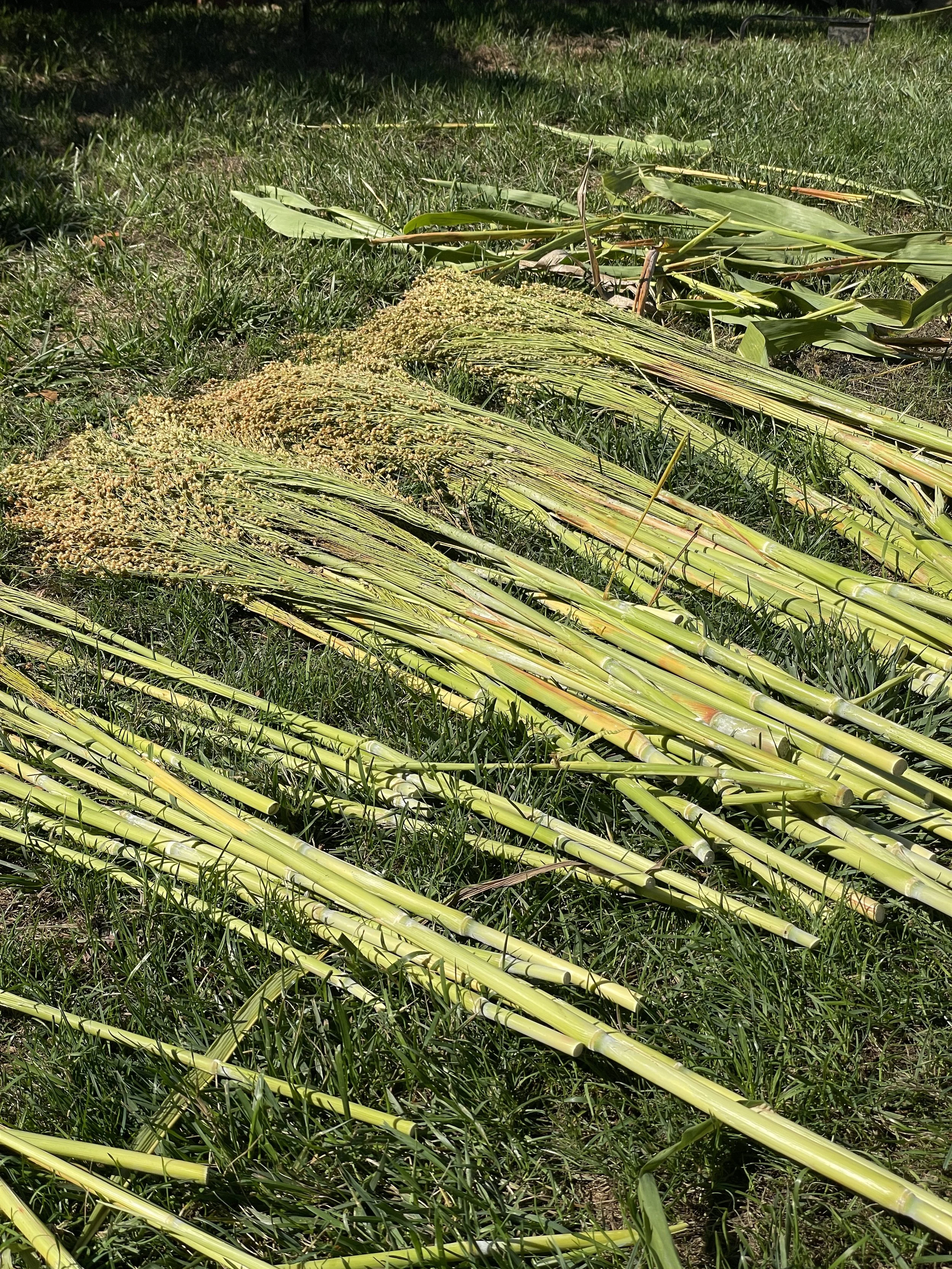
Broomcorn
Harvesting Process
Broomcorn is a type of sorghum (Sorghum bicolor)grown for its tassels, or seed heads, which are used to make natural brooms. An annual plant, broomcorn is planted in the spring and harvested in the fall.
In 2025 Husk Brooms partnered with local Pittsburgh area farmers Soil Sisters and Tiny Seed Farm to help grow broomcorn domestically and sustainably.
Broomcorn grows tall stalks and is best planted in rows. It does not produce fruit, but rather sends all its energy to it’s seeded tassel head at the top. The tassel heads will start to show midway through its growing cycle and then take off quickly! A telling sign when it’s time to harvest is when the weight of the seeded tassels start to drape or curve down. I like to harvest later in the year to make sure the tassel length grew as long as possible.
After the fresh broomcorn is cut, I start forming piles organizing the broomcorn by how long their tassel lengths are (S, M, L, XL). Once grouped by size, I bundle them together with twine and hang upside from my shed to dry for a couple weeks. The weight of the seeds help straighten the tassels.
When it’s time to harvest I cut about 9” from the base of the tassel head. Broomcorn naturally grows “knuckles” along the stalk (like bamboo) and I find the top knuckle closest to the tassel heads (usually 9” or so) can easily snap separating the tassel head from the stalk making the harvesting quicker.
After two weeks and when the fiber is dry, the seeds can be brushed off the tassel heads using a comb. I prefer using a metal comb.
Seeds can be saved and planted for next year’s growing season. I store my seeds in a brown paper bag in the basement.
After the seeds are removed, broomcorn can be used for crafting!

